
The iPod is a discontinued series of portable media players and multi-purpose mobile devices designed and marketed by Apple Inc. The first version was released on November 10, 2001, about 8+1⁄2 months after the Macintosh version of iTunes was released. Apple sold an estimated 450 million iPod products as of 2022. Apple discontinued the iPod product line on May 10, 2022. At over 20 years, the iPod brand is the oldest to be discontinued by Apple.
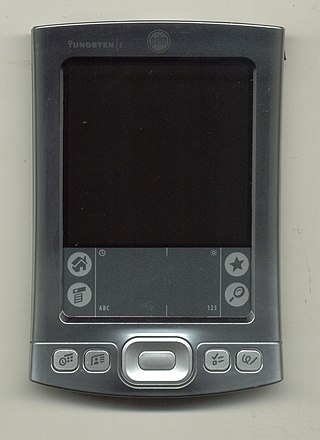
The Tungsten series was Palm, Inc.'s line of business-class Palm OS-based PDAs.

ZEN is a series of portable media players designed and manufactured by Creative Technology Limited from 2004 to 2011. The players evolved from the NOMAD brand through the NOMAD Jukebox series of music players, with the first separate "ZEN" branded models released in 2004. The last Creative Zen player, X-Fi3, was released at the end of 2011.
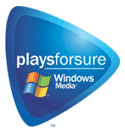
Microsoft PlaysForSure was a certification given by Microsoft to portable devices and content services that had been tested against several hundred compatibility and performance requirements. These requirements include codec support, Digital rights management support, UI responsiveness, device performance, compatibility with Windows Media Player, synchronization performance, and so on. PlaysForSure certification was available for portable media players, network-attached digital media receivers, and media-enabled mobile phones. The PlaysForSure logo was applied to device packaging as well as to online music stores and online video stores.

A portable media player (PMP) or digital audio player (DAP) is a portable consumer electronics device capable of storing and playing digital media such as audio, images, and video files. The data is typically stored on a compact disc (CD), Digital Versatile Disc (DVD), Blu-ray Disc (BD), flash memory, microdrive, SD cards or hard drive; most earlier PMPs used physical media, but modern players mostly use flash memory. In contrast, analogue portable audio players play music from non-digital media that use analogue media, such as cassette tapes or vinyl records.
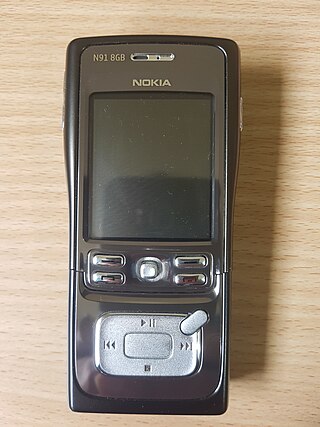
The Nokia N91 is a mobile phone produced by Nokia as part of their Nseries line of portable devices. It was announced on April 27, 2005 along with N70 and N90 as the first three Nseries devices. The N91 ran on Symbian-based S60 3rd Edition. It was the first ever phone encompassing a 4 GB internal hard drive, allowing storage for 3,000 songs. The N91 is highly focused on music. with dedicated music keys on the front which slide down to reveal the keypad. It also featured the industry-standard 3.5 mm headphone jack, and was anticipated as a major challenger to Apple, whose iPod dominated the industry. The design of the N91 is based on stainless steel with a matte finish.
Janus was the codename of a version of Windows Media DRM primarily for portable devices, whose marketing name was Windows Media DRM for Portable Devices. It was introduced by Microsoft in 2004 for use on portable media devices which store and access content offline. Napster To Go was the first online music store to require the Janus technology. Supporting Janus often implies that the device also makes use of Media Transfer Protocol (MTP).
The Gigabeat was a line of digital media players by Toshiba.

Zune was a brand of digital media products and services that was marketed by Microsoft from November 2006 until it was discontinued in June 2012. Zune consisted of a line of portable media players, a music subscription service known as Zune Music Pass plus Zune Marketplace for music, TV and movies, streaming services for the Xbox 360 game console, and the Zune software media player for Windows PCs which also acted as desktop sync software for Windows Phone.
The following comparison of portable media players compares general and technical information for notable digital playback devices.

Zune is a discontinued software program that was developed by Microsoft for Windows that functions as a full media player, library, media streaming server, mobile device management, and interface for the discontinued Zune Marketplace. The software is used to sync with all devices with Zune functionality including the Zune 4, 8, 16, 30, 80, 120, Zune HD, Windows Phone 7, and Microsoft Kin. Zune devices work exclusively with the Zune software, which applies many design principles of Microsoft's Metro design language.
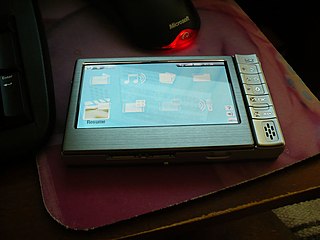
Archos Generation 4 were a series of Archos portable media players released from 2006 through 2007. The Generation 4 series is an upgrade to the previous AV and Gmini series, primarily the AV500s. There are 8 models in all. All players are Microsoft PlaysForSure compatible.

The iPod Classic is a discontinued portable media player created and formerly marketed by Apple Inc.

The Zune 4, Zune 8, and Zune 16 are second-generation models of the Zune lineup, they were first announced on October 2, 2007 and released on November 13, 2007 in the United States and June 13, 2008 in Canada. They are flash memory-based players meant to compete with the iPod Nano and the Sansa Fuze, both smaller and cheaper than the three hard drive-based Zune devices, the Zune 30, Zune 80, and Zune 120. They feature music, video, and podcast support, and come with Wi-Fi and FM Radio.

The Zune 30 is a portable media player developed by Microsoft, and the first hardware device in Microsoft's Zune brand. It was released on November 14, 2006, simply named the Zune. After subsequent versions with different hard drive capacities, the original Zune was renamed Zune 30.
The Walkman A810 series is a portable media player designed by Sony. It was a flagship model in the Walkman digital player family. The model debuted in Asia in 2007, and then became available in North America. This series updates the previous Walkman A800 of the Walkman A Series, with the same hardware but different on-PC music management program.
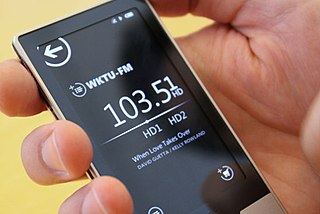
The Zune HD is a portable media player in the Zune product family released on September 15, 2009, by Microsoft. It was a direct competitor with Apple's iPod Touch series of mobile devices. It was initially released in 16 and 32 GB capacities. A 64 GB version was released on April 9, 2010. It has a touchscreen interface for navigation and included Wi-Fi for synchronization, access to the Zune Marketplace and Web browsing.

Kin was a short-lived mobile phone line from Microsoft designed for users of social networking. The phones, aimed at people between ages 15 and 30, were manufactured by Sharp Corporation and sold through Verizon Wireless.

The Nook 1st Edition is the first generation of the Nook e-book reader developed by American book retailer Barnes & Noble, based on the Android platform. The device was announced in the United States in October 2009 and was released the next month. The Nook includes Wi-Fi and AT&T 3G wireless connectivity, a six-inch E Ink display, and a separate, smaller color touchscreen that serves as the primary input device. In June 2010 Barnes & Noble announced a Wi-Fi-only model of the Nook. On June 5, 2018 Barnes and Noble announced support for logging in to BN.com and adding new content to the device will end on June 29, 2018. The second-generation Nook, the Nook Simple Touch, was announced May 25, 2011 with a June 10 release date.
















